
Q1. Average BPL population in city X and Y is how much more/less than average BPL population in city K and L ?
(a) 794
(b) 824
(c) 848
(d) 764
(e) None of these
Q2. Average population in city K and L is what percent of total population in city Z ?
(a) 93%
(b) 73%
(c) 83.125%
(d) 87.50%
(e) 78.625%
Q3. In another city ‘A’, BPL population is half of the population other than BPL in city K which is 25% of total population. Then find total population in city A ?
(a) 6820
(b) 6080
(c) 6240
(d) None of these
(e) 6040
Q4. What is the average BPL population in all the cities ?
(a) 1924
(b) None of these
(c) 1884
(d) 1724
(e) 1964
Q5. What is the ratio of BPL population in city Y to city L ?
(a) 426 : 353
(b) 353 : 426
(c) 351 : 425
(d) None of these
(e) 353 : 428
Direction (6 – 10): Line graph shows marked up percentage of four articles above cost price and table shows marked price of these four articles. Read the data carefully and answer the questions.
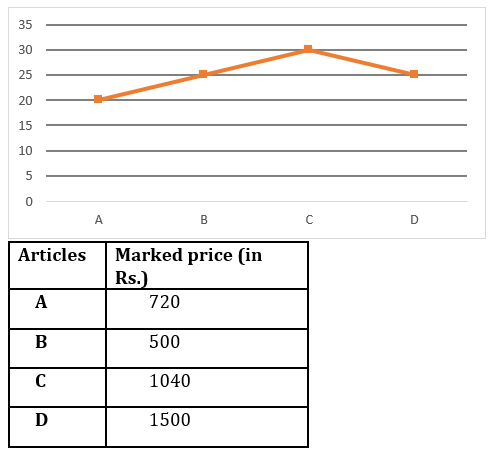
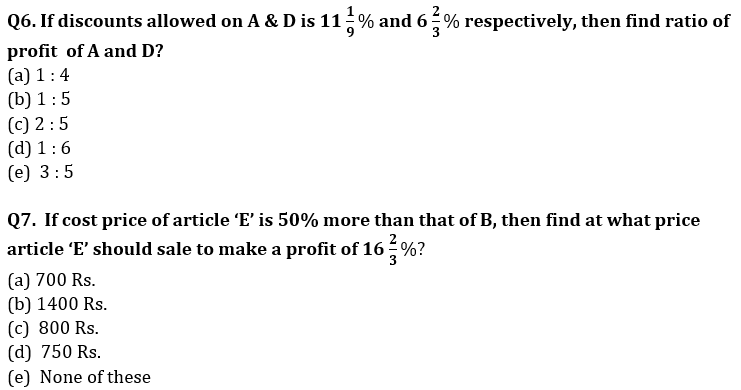
Q8. If discount (in %) given on article B & D is in the ratio of 1 : 3 and ratio of profit on article B & loss on article D is same (in Rs) , then find discount allowed on article D?
(a) 18%
(b) 12%
(c) 30%
(d) 15 %
(e) 24%
Q9. Cost price of A is what percent less than average cost price of B, C & D ?
(a) 12%
(b) 10%
(c) 15%
(d) 25%
(e) 20%
Q10. Discount allowed on article C is 15% and selling price of article ‘X’ is Rs. 316 more than that of C. If profit made on ‘X’ is 20%, then find difference between cost price of D & X?
(a) 300 Rs.
(b) 600 Rs.
(c) 400 Rs.
(d) 200 Rs.
(e) 100 Rs.
Solutions
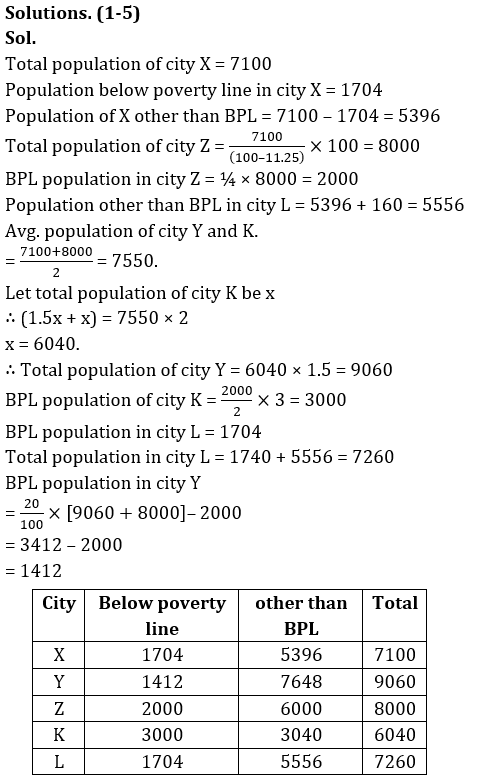
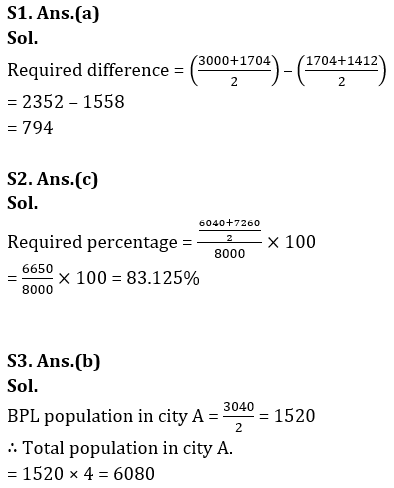
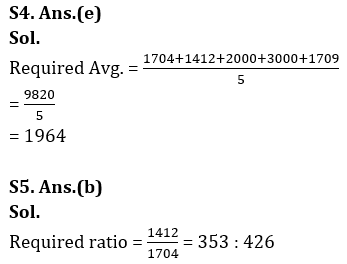
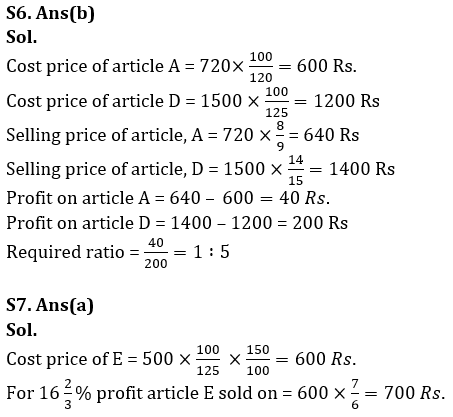
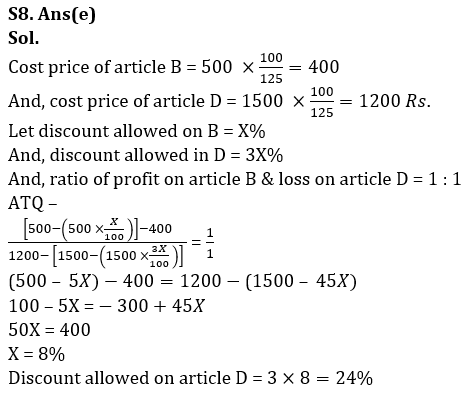
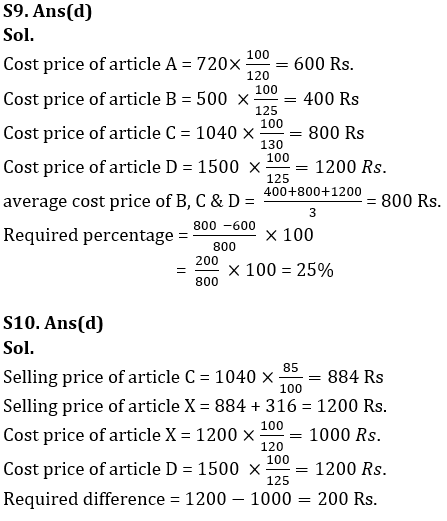
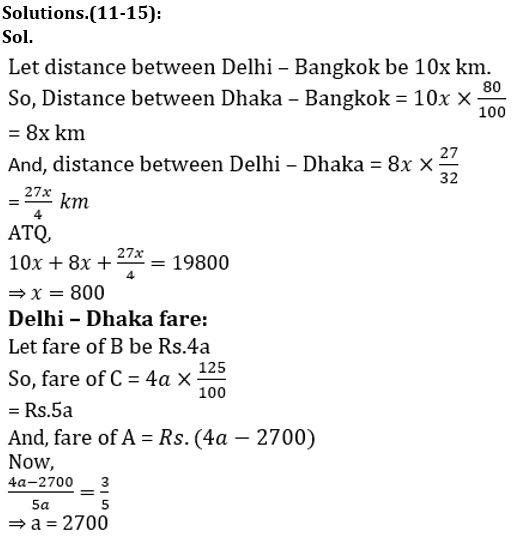


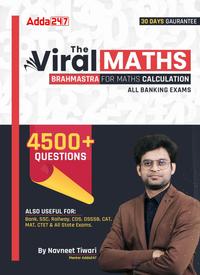


 Quantitative Aptitude Quiz For Bank Main...
Quantitative Aptitude Quiz For Bank Main...
 Quantitative Aptitude Quiz For Bank Foun...
Quantitative Aptitude Quiz For Bank Foun...





